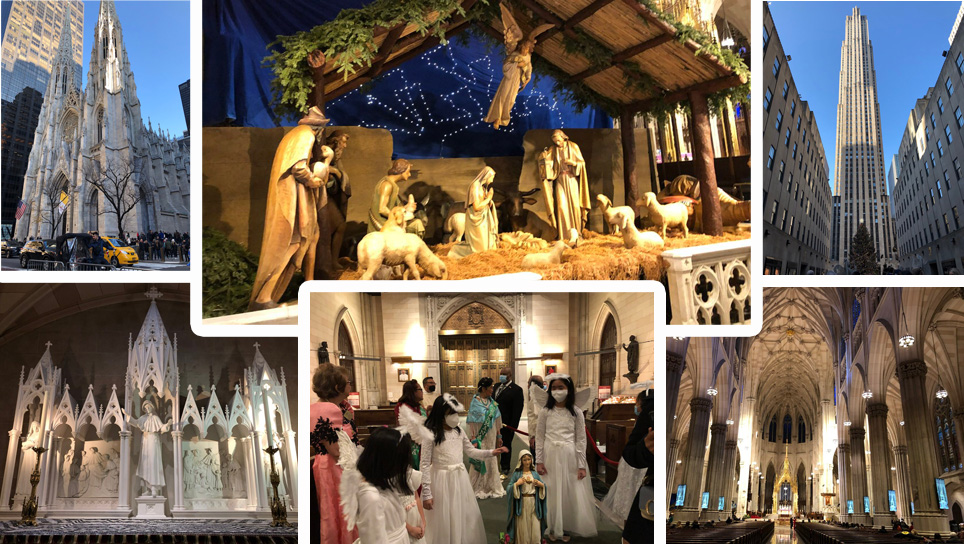RELIGION IN THE MEGACITIES
It was my first time to go around Manhattan this time of the year. I travelled there to celebrate Simbang Gabi with the Filipino community at St. Patrick's Cathedral of New York. The earliest Simbang Gabi I have ever celebrated in my life (December 4). Hahaha. And lo and behold, there were "angels", banners and hermanas, procession of the image of Mary, the Mass said in Tagalog, and Christmas carols sung in local tunes ("Kasadya ning Taknaa" - the choir was a family from Cebu and Surigao) — all inside the cathedral of New York under the skyscrapers of the Big Apple. And the tourists stopped. Some joined in and finished the Mass.

I remembered an article I published some few years back: "Faith and Religion in Globalized Megacities". Below is an excerpt.
Have the gods left the city? Have they come back with a vengeance? Where can we find them now? Popular imagination has ambivalent notions of the divine presence in urban and cosmopolitan contexts. On the one hand, we have metaphorical “sin cities” deserving of God’s wrath and punishment. On the other hand, all religions vigorously flourished in the world’s main cities. Where shall we locate religion in our present globalized cities?
Secularization theories have a view of religion that fades at the onset of modern rationality. As modernity advances, it argues, religion retreats from the social milieu. In the words of C. Wright Mills, religion will “disappear altogether except, possibly, in the private realms.” The modern “iron cage of reason” is supposed to drive away the religious relegating it to one sphere of life – the private – rather than as one all-pervading narrative. Thus, the local and the rural overflows with religion while the cosmopolitan and the urban is bereft of it.
But there is another competing narrative worth recounting. Religions and cities in fact are never strangers to one another. Religions created cities around them; and urban locations become a fertile network for the flourishing of religious beliefs. The first cities that emerged in Mesopotamia around 3200 BCE were also organized around temples. Religion provided cohesion and control among the population, thus, explaining the intricate relationship between the notion of ‘god’ and ‘king’ in the city as the center of power.
In this view, religions have not retreated to some private realm. These celebrations are public for all to see and participate. Santakrusan is a public spectacle in the winding route around downtown Manhattan’s Fifth Avenue where a medieval-clad Reyna Elena (Queen Helena) and her small boy, Constantine, majestically walks along with her royal court composed of other lower ‘queens’, ‘princesses’ and their escorts under arches adorned with flowers. Simbang Gabi is a series of early dawn Masses nine days before Christmas attended not only by Filipinos but also their friends from different countries. Food is served in parish halls to the delight of non-Filipino guests. Attending in any of these celebrations shows the sacralization of the city as it encounters these religions and the urbanization of these otherwise traditional religious practices and it navigates in the plural cityscapes.
Some thinkers declare this contemporary revival of religions as the “resurgence of religion” in the city, the “re-enchantment of the world”. “God is back”, some writers proclaim.
But has God left in the first place?
Daniel Franklin E. Pilario, CM
St. John's University
New York
12.05.2021
Thanks Leny [Catalina de Leon] and Dee for the invitation.
The full article can be accessed here:
https://concilium-vatican2.org/en/unclassified/2019-01-07/ and
https://collections.unu.edu/.../Messner_Concilium2019...


